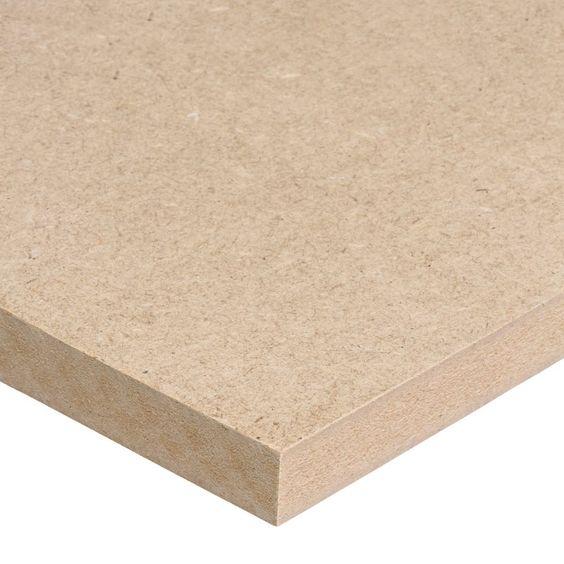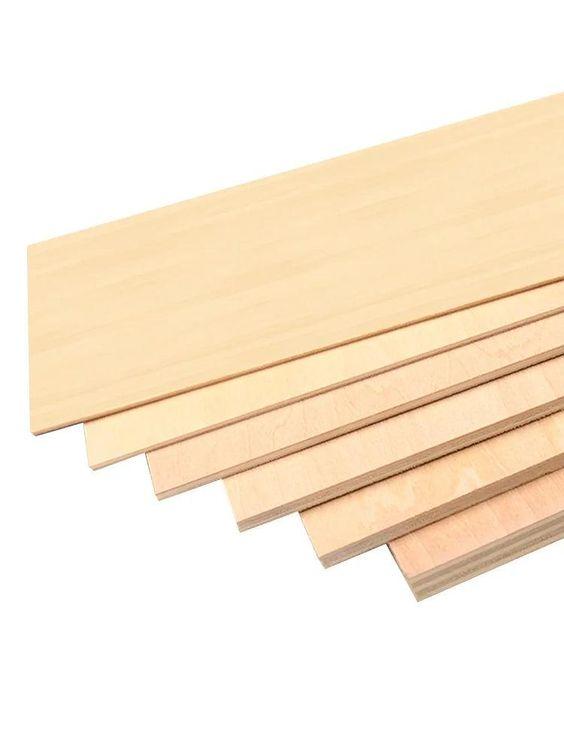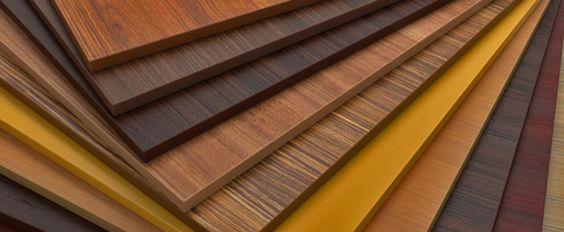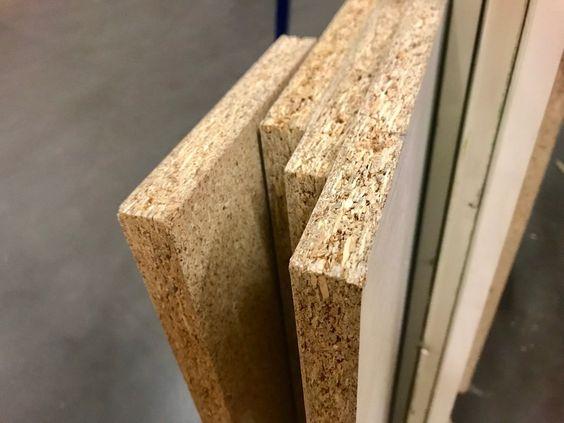



Table of Contents
- Introduction
- Composition and Manufacturing
- Plywood
- Cost Comparison
- Strength - Comparison between MDF and Plywood
- Durability - Comparison between MDF and Plywood
- Advantages of MDF
- Considerations When Using MDF
- Advantages of Plywood
- Considerations When Using Plywood
- MDF Applications
- Plywood Applications
- Environmental and Health Considerations
- When to Choose MDF and Plywood?
- Conclusion
- Faq's
Introduction
When it comes to woodworking and construction, two materials often come to the forefront: Medium-Density Fiberboard (MDF) and plywood. Each has unique characteristics that make it suitable for specific applications.
This article will delve deeply into the composition, properties, advantages, disadvantages, applications, and environmental considerations of MDF and plywood, helping you make an informed choice for your next project.
Composition and Manufacturing
MDF
Medium-density fiberboard (MDF) is an engineered wood product made from wood fibers, wax, and resin. The manufacturing process involves breaking down hardwood and softwood into tiny fibers, which are then mixed with adhesive and formed into sheets under high temperature and pressure. This process results in a dense, uniform board that is smooth and free of knots or grains.
Key Features of MDF:
Uniform Density: MDF has a consistent density throughout, which makes it an excellent choice for applications requiring a smooth finish.
No Grain or Knots: The absence of wood grain allows for easy painting and veneering, making it ideal for decorative applications.
Thickness Options: MDF is available in various thicknesses, typically ranging from 3mm to 30mm.
 MDF Board, Pinterest
MDF Board, Pinterest
Plywood
Plywood is made from thin layers, or "plies" of wood veneer that are glued together. The veneers are typically arranged with their grains running in different directions, which enhances the material's strength and stability.
The number of layers can vary, with common configurations being 3, 5, or more layers, depending on the required thickness and application.
Key Features of Plywood:
Layered Structure: The cross-laminated construction provides strength and resistance to warping and cracking.
Variety of Wood Types: Plywood can be made from various types of wood, including hardwoods and softwoods, allowing for a range of aesthetic options.
Thickness Options: Plywood is also available in various thicknesses, usually from 3mm to 25mm or more.
 Plywood, Pinterest
Plywood, Pinterest
Cost Comparison
When it comes to cost, MDF is generally less expensive than plywood. The price difference can be significant, especially for thicker boards. For example, a 25mm MDF board may cost about half as much as a similar thickness of high-quality plywood.
However, the cost of plywood can vary widely depending on the type of wood used and the grade of the product, with higher-quality plywood being more expensive due to its aesthetic appeal and durability.
Factors Influencing Cost:
Material Quality: Higher-grade plywood made from hardwoods will be more expensive than lower-grade plywood made from softwoods.
Thickness: Thicker boards typically cost more, regardless of whether they are MDF or plywood.
Finishing: Pre-finished or specialty plywood (like marine grade) will also command a higher price.
Strength - Comparison between MDF and Plywood
Strength
When it comes to strength, plywood holds a clear advantage over MDF. Plywood is known for its superior load-bearing capacity, making it suitable for structural applications. It can withstand heavy weights and is less prone to bending or sagging under pressure. The cross-laminated structure of plywood distributes weight evenly, enhancing its strength.
In contrast, MDF is softer and generally has a lower load-bearing capacity. It can sag under heavy loads, making it less suitable for applications requiring high strength.
Durability - Comparison between MDF and Plywood
Moisture Resistance:
Plywood is more resistant to moisture than MDF. It can be treated to withstand outdoor conditions, making it suitable for applications in humid environments. In contrast, MDF absorbs water easily, leading to swelling and damage if not properly sealed. This makes plywood a better choice for areas exposed to humidity or moisture, such as kitchens and bathrooms.
Wear Resistance:
Plywood is also more resistant to wear and tear than MDF. It can withstand impacts and scratches better, making it ideal for high-traffic areas and heavy-use furniture.
Advantages of MDF
Versatility: MDF can be used for a wide range of applications including furniture, cabinets, doors, and decorative elements. Its smooth surface allows for easy painting and veneering, making it suitable for both functional and aesthetic projects.
Ease of Cutting and Shaping: MDF is easy to work with, as it can be cut and shaped using standard woodworking tools like saws and routers. It does not splinter or tear easily, which allows for clean cuts and precise shapes, making it ideal for intricate designs.
Consistency: Unlike solid wood, MDF is manufactured to be uniform in density and texture, which eliminates issues like voids or knots. This consistency makes it easier to achieve high-quality finishes and ensures reliable performance in various applications.
Cost-Effectiveness: Generally, MDF is more affordable than solid wood and plywood, making it an economical choice for both professional and DIY projects. Its affordability does not compromise its quality, as it provides a strong and durable alternative.
Moisture Resistance: While standard MDF is not water-resistant, there are moisture-resistant variants available that are suitable for use in humid environments like kitchens and bathrooms. This adaptability further enhances its usability in different settings.
Considerations When Using MDF
Dust Production: Cutting and sanding MDF generates fine dust that can be harmful if inhaled. It is advisable to use protective gear such as masks and to work in well-ventilated areas or outdoors when possible.
Weight: MDF is relatively heavy compared to other materials, which can make handling and transportation more challenging. This weight should be considered when planning projects that require mobility.
Water Sensitivity: Standard MDF can swell and degrade when exposed to moisture. Proper sealing and finishing are necessary to protect it from water damage, especially in areas prone to humidity.
Screw Holding: While MDF holds screws better than chipboard, it is not as strong as solid wood. Pre-drilling is often recommended to avoid splitting when inserting screws.
Also Read: What is Veneer Finish? - Benefits, Uses, Types, Maintenance
Advantages of Plywood
Affordability and Accessibility: Plywood is generally more affordable than solid wood, which makes it an attractive option for DIY enthusiasts and professionals alike. Its cost-effectiveness allows users to undertake larger projects without significantly impacting their budget.
Ease of Cutting and Shaping: One of the standout features of plywood is its ease of manipulation. It can be easily cut, shaped, and drilled using common woodworking tools such as saws and routers. This accessibility makes it suitable for individuals with varying levels of woodworking experience, allowing for precise cuts and custom shapes without the need for specialized skills.
Stability and Durability: Plywood's layered construction provides excellent stability, reducing the likelihood of warping or cracking. This stability is crucial for maintaining the integrity of projects over time, especially in environments with fluctuating humidity and temperature. Its resistance to deformation makes it ideal for load-bearing applications, such as shelving and structural elements.
Versatility in Applications: Plywood is incredibly versatile and can be used in a wide range of applications, from furniture manufacturing to interior design and even boat building. Its ability to take various finishes paints, stains, and veneers allows users to achieve desired aesthetics, making it suitable for both functional and decorative projects.
In summary, plywood's affordability, ease of cutting, stability, and versatility make it an excellent choice for a wide range of projects, catering to both novice and experienced users.
Considerations When Using Plywood

Higher Expense: Plywood is generally more expensive than alternatives like Medium Density Fiberboard and particleboard, which can be a significant factor for budget-conscious projects.
Water Damage: Standard plywood is susceptible to moisture. It can warp, swell, or delaminate when exposed to water, particularly if not properly sealed. Even moisture-resistant grades can be compromised if subjected to prolonged exposure.
Difficult to Cut: Cutting plywood can be challenging, especially for thicker sheets. The edges may splinter during cutting, requiring careful handling and finishing to achieve a clean look.
Visible Layers: The layered construction of plywood can result in visible edges that may not be aesthetically pleasing. These edges often require additional finishing, such as edge banding or lamination, to achieve a polished appearance.
Toxic Chemicals: Some plywood products, especially those made with urea-formaldehyde glue, can emit volatile organic compounds, which may pose health risks. This is particularly a concern in poorly ventilated spaces.
Less Durable than Solid Wood: While plywood is strong, it may not match the durability of solid wood in certain applications. For example, plywood components can be more prone to splitting or cracking under stress compared to solid wood.
Heavy Material: Plywood can be quite heavy, particularly in thicker grades, which can complicate transportation and installation, especially for larger projects.
Inconsistent Quality: The quality of plywood can vary significantly based on the type of wood veneer used and the manufacturing process. This inconsistency can make it difficult for consumers to assess the quality before purchase.
Also Read: Oxide Flooring for Homes: Designs, Benefits & Maintenance Tips
MDF Applications

MDF is primarily used for indoor applications due to its poor moisture resistance. Common uses include:
Furniture: Ideal for cabinets, shelves, and tables due to its smooth surface and ease of machining.
Decorative Moldings: Perfect for crown moldings, baseboards, and trim work where a smooth finish is essential.
Interior Paneling: Often used in wall paneling and wainscoting because of its ability to be painted or veneered.
Craft Projects: Popular among hobbyists for crafting and DIY projects due to its ease of use.
Plywood Applications
Plywood, with its superior strength and moisture resistance, is suitable for a wider range of applications, including:
Structural Components: Used in framing, flooring, and roofing due to its load-bearing capacity.
Exterior Cladding: Suitable for outdoor applications, such as siding and decking, especially when treated for weather resistance.
Furniture: Commonly used for high-quality furniture where aesthetics and durability are important.
Boat Building: Marine-grade plywood is specifically designed for use in boats and other watercraft due to its resistance to moisture.
Environmental and Health Considerations
Both MDF and plywood can emit volatile organic compounds (VOCs) due to the adhesives used in their manufacturing. MDF typically contains urea-formaldehyde, which can pose health risks at high concentrations. However, formaldehyde-free options are available for both materials, particularly in plywood.
Environmental Impact
Sustainability: Plywood is often considered more environmentally friendly than MDF because it is made from natural wood and can be sourced from sustainably managed forests. Many plywood manufacturers adhere to certifications like the Forest Stewardship Council (FSC), ensuring responsible sourcing.
Recyclability: Both materials can be recycled, but plywood has the edge in terms of biodegradability due to its natural wood content.
Health Considerations
Formaldehyde Emissions: MDF can emit higher levels of formaldehyde compared to plywood. If you are concerned about indoor air quality, look for low-emission or formaldehyde-free MDF and plywood options.
Dust and Particulates: Cutting MDF generates more dust, which can be harmful if inhaled. Proper safety equipment, including masks and goggles, should be used when working with MDF.
Also Read: 15 Gypsum False Ceilings Ideas For Your Home 2024
When to Choose MDF and Plywood?
Criteria | When to Choose MDF | When to Choose Plywood |
Cost | You need a cost-effective material for indoor applications. | Higher cost may be acceptable for enhanced durability. |
Surface Finish | A smooth, uniform surface is essential for painting or veneering. | A natural wood aesthetic is desired, showcasing the wood grain. |
Design Complexity | You are working on intricate designs that require detailed machining. | The project requires structural integrity, such as framing or flooring. |
Moisture Resistance | Moisture exposure is not a concern. | You need a strong, durable material that can withstand moisture and heavy loads. |
Durability | N/A | You are working in an environment where durability and wear resistance are critical. |
By understanding the differences between MDF and plywood, you can make an informed decision that best suits your needs. Whether you prioritise cost, aesthetics, strength, or environmental impact, both materials have their unique advantages that can cater to a variety of woodworking and construction projects.
Conclusion
Choosing between MDF and plywood ultimately depends on the specific requirements of your project. Choose MDF if you need a cost-effective, smooth surface for indoor applications where moisture is not a concern, and where intricate designs are required. Opt for plywood if you need a strong, durable material that can withstand moisture and heavy loads, making it suitable for both structural and aesthetic applications. Understanding these differences will help you make an informed decision that best suits your needs.
explore further
Latest from Contemporary ideas
More from Innovations
Resources
Dwello, for every home buyer, is a way to go from 'I feel' to 'I know', at no extra cost.




